Tai Chi's gentle flowing movements can effectively calm your anxious mind and body. You'll want to start with fundamental practices like Cloud Hands, which releases shoulder tension, and Standing Like a Tree, which builds mental stability through focused stillness. Deep breathing forms the foundation of these movements – inhale during upward motions and exhale as you move downward. For quick anxiety relief, try a five-minute sequence combining Standing Meditation, Cloud Hands, and Flowing Water movements. You can practice these calming techniques anywhere, wearing comfortable clothing and flat shoes. Discovering the right combination of movements will help you develop your own anxiety-management toolkit.
Understanding Tai Chi for Anxiety
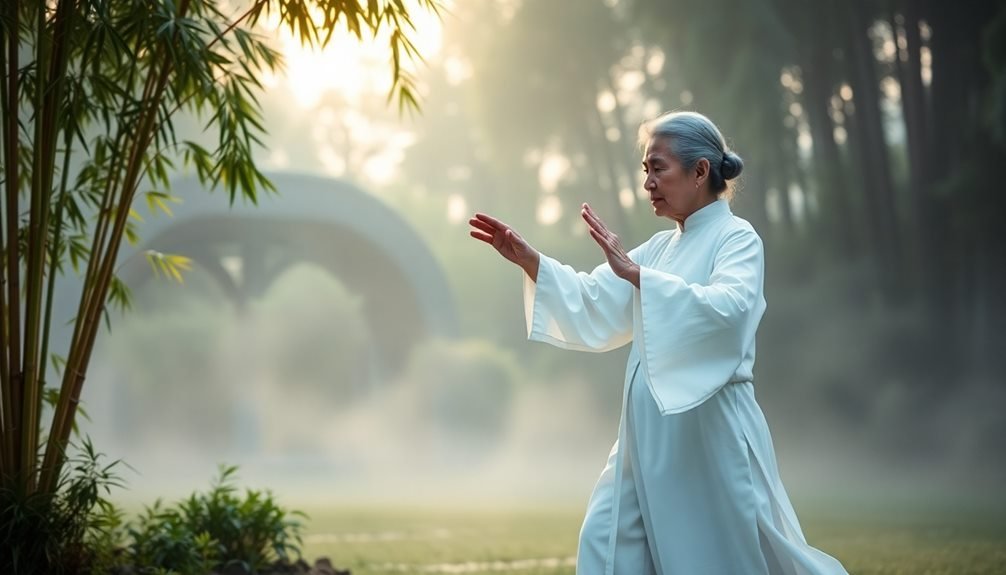
Known for its gentle flowing movements, Tai Chi offers a powerful antidote to anxiety through its combination of mindful movement and controlled breathing. This ancient Chinese practice integrates physical postures, breathing techniques, and mental focus to create a moving meditation that can help calm your nervous system and reduce stress levels.
When you practice Tai Chi for anxiety relief, you'll notice it works on multiple levels. The slow, deliberate movements help release physical tension, while the focused breathing activates your body's relaxation response.
You're fundamentally training your mind to stay present, which counteracts anxiety's tendency to pull you into worried thoughts about the future.
The beauty of Tai Chi lies in its accessibility. You don't need special equipment or peak physical fitness to begin. The practice emphasizes proper alignment and natural movement patterns that anyone can learn.
As you progress, you'll develop better body awareness, balance, and coordination. Most importantly, you'll build a practical toolkit for managing anxiety symptoms through movement sequences that you can perform almost anywhere, whether you're at home, in the office, or outdoors.
Benefits of Mindful Movement
When you practice mindful movement through Tai Chi, you're engaging both your body and mind in a harmonious dance that promotes mental balance.
Your focused attention on each gentle motion helps clear racing thoughts while naturally releasing tension from your muscles and joints.
As you coordinate your breathing with the flowing movements, you'll create a powerful connection that allows stress to melt away, replacing anxiety with a sense of calm control.
Balance for Mental Calm
Finding mental balance through mindful movement creates a powerful foundation for reducing anxiety. When you practice Tai Chi's balancing postures, you'll notice how physical stability directly connects to emotional steadiness. Your mind becomes anchored in the present moment as you focus on maintaining equilibrium.
The "Golden Rooster Stands on One Leg" pose challenges you to center your weight while keeping your breathing steady. As you shift between movements, you'll discover that mental chatter naturally subsides, replaced by heightened body awareness. This mental clarity helps break anxiety's grip on your thoughts.
You can enhance your practice by incorporating the "Cloud Hands" movement, which requires smooth weight transfers while maintaining upper body fluidity. This combination trains your brain to handle uncertainty with grace, a crucial skill for managing anxiety.
When you're able to balance physically, you're building neural pathways that support emotional balance too.
Movement Releases Stress Naturally
Through gentle, flowing movements, Tai Chi naturally triggers your body's stress-release mechanisms. As you practice these deliberate motions, your muscles release tension while your brain produces endorphins – natural mood elevators that help combat anxiety. The rhythmic nature of Tai Chi encourages deep breathing, which activates your parasympathetic nervous system and reduces cortisol levels.
When you engage in Tai Chi's mindful movements, you'll notice your body responding in several ways. Your heart rate moderates, blood pressure often decreases, and muscle tension melts away. The continuous flow from one position to another helps break the cycle of anxious thoughts by requiring your focus to stay in the present moment.
You don't need to master complex sequences to benefit from this stress-relieving practice. Even basic Tai Chi movements like "Wave Hands Like Clouds" or "White Crane Spreads Wings" can help you tap into these natural calming effects.
The key is maintaining smooth, unhurried movements while coordinating your breath with each shift. This mind-body connection creates a moving meditation that naturally dismantles stress patterns and promotes emotional balance.
Preparing Your Practice Space
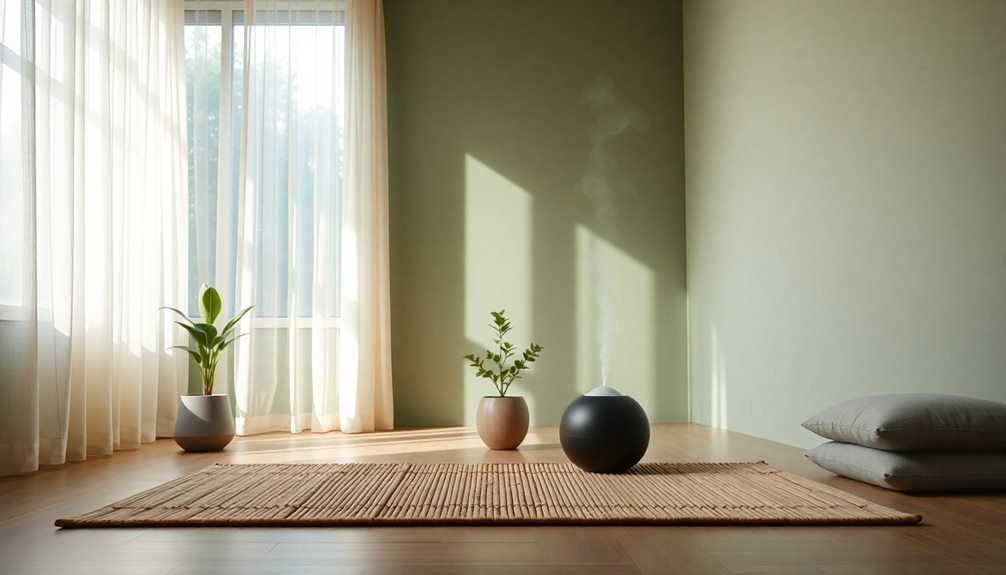
A well-prepared practice space greatly enhances your Tai Chi experience and helps maintain focus during anxiety-reducing movements.
Choose a quiet area that's free from distractions, whether it's a corner of your bedroom, a peaceful spot in your garden, or a dedicated meditation room. You'll need enough space to extend your arms fully and take a few steps in each direction without obstacles.
Clear the floor of any hazards and guarantee you have a non-slip surface. If you're practicing indoors, consider using a yoga mat for better grip and joint comfort.
The room's temperature should be comfortable – not too hot or cold – with adequate ventilation. Natural light works best, but soft artificial lighting is fine for evening practice.
Keep your practice space clutter-free and organized. You might want to add calming elements like plants, a small water fountain, or peaceful artwork, but don't overcrowd the area.
Position yourself so you're facing a blank wall or peaceful view rather than windows or busy spaces that might distract you during your practice.
Deep Breathing Fundamentals
Learn to power your Tai Chi movements by breathing deeply from your diaphragm, letting your belly expand as you inhale and contract as you exhale.
You'll want to coordinate your breath with each flowing movement, typically inhaling during upward or opening motions and exhaling during downward or closing positions.
As you practice, maintain a steady rhythm of four counts in and four counts out, which helps establish a meditative state and maximizes oxygen flow throughout your body.
Breathe From Your Core
Proper breathing forms the foundation of effective Tai Chi practice and anxiety management. When you breathe from your core, you'll engage your diaphragm – the muscle beneath your lungs that controls breathing. This technique, known as "dantian breathing" in Tai Chi, helps calm your nervous system and reduces anxiety's physical symptoms.
To practice core breathing, place one hand on your chest and the other on your lower abdomen, just below your navel. As you inhale through your nose, focus on expanding your lower belly first, letting it push against your hand. Your chest should remain relatively still.
When you exhale through your mouth, gently contract your abdominal muscles, drawing your navel toward your spine. Start with 5-10 breaths, gradually increasing the duration as you become more comfortable. You'll notice that core breathing naturally slows your breath rate and deepens each breath.
This method helps activate your body's relaxation response, lowering cortisol levels and reducing anxiety. As you practice, sync your breathing with gentle Tai Chi movements to enhance the calming effects and create a mindful connection between your breath and body.
Timing Your Breath Pattern
Timing your breath pattern creates a rhythmic foundation for Tai Chi's anxiety-reducing benefits. When you match your movements with controlled breathing, you'll establish a meditative state that helps calm your nervous system. Start by counting your breaths: inhale for four counts and exhale for six counts, creating a natural, unhurried rhythm.
As you practice Tai Chi movements, coordinate your breath with specific actions. Inhale when you're gathering, collecting, or moving upward, and exhale when you're releasing, pushing, or moving downward. For example, when performing "Wave Hands Like Clouds," breathe in as your hands rise and out as they fall.
You'll want to maintain a steady pace that feels comfortable and sustainable. If you notice yourself getting winded or holding your breath, slow down your movements until they sync naturally with your breathing.
Keep your breath smooth and continuous – avoid choppy or forced breathing patterns. With practice, you'll develop an intuitive sense of when to inhale and exhale, allowing your breath to flow effortlessly with each movement.
Cloud Hands Movement
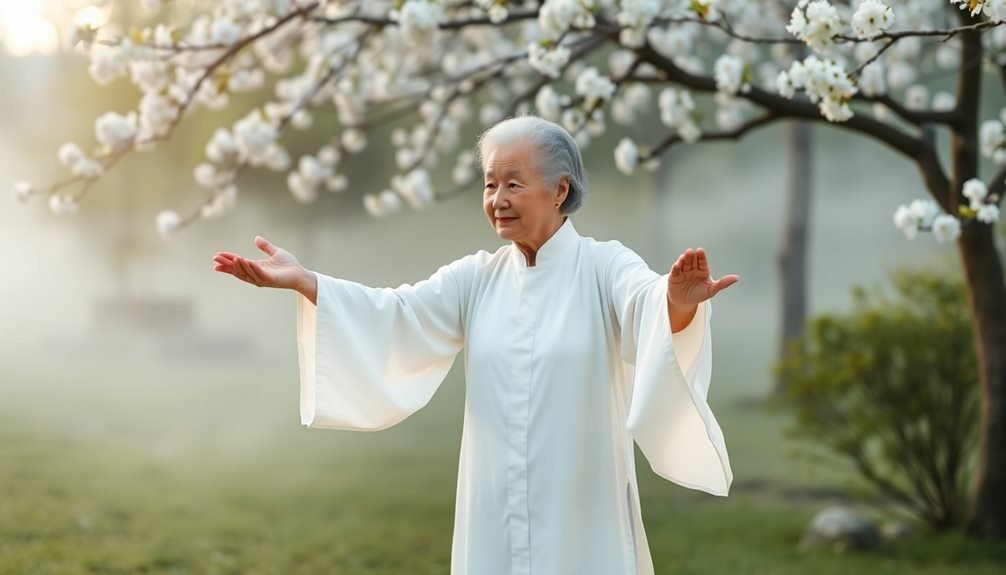
Moving through clouds with graceful, flowing motions characterizes the Cloud Hands movement in Tai Chi. This meditative movement helps calm your mind while strengthening your core and improving balance.
You'll start by standing with your feet shoulder-width apart, knees slightly bent, and your weight evenly distributed.
Begin by raising your hands to chest height, palms facing each other. As you shift your weight to your right leg, your left hand moves up while your right hand moves down. Imagine you're sliding your hands along an invisible vertical surface. Your torso turns slightly as your hands move, following your weight shift. Your eyes should follow your upper hand's movement.
Next, shift your weight to your left leg while reversing the hand positions. Your right hand now moves up as your left hand moves down. Continue this flowing pattern, coordinating your breath with each weight shift.
You'll find that this rhythmic movement helps release tension in your shoulders and neck while promoting mental clarity. The continuous, circular motion of Cloud Hands creates a soothing effect that can greatly reduce anxiety levels.
Standing Like a Tree
Standing Like a Tree builds your mental stability by requiring you to remain perfectly still while focusing on your breathing and posture.
You'll start by planting your feet shoulder-width apart, keeping your knees slightly bent, and allowing your arms to form a gentle circle in front of your chest as if you're hugging a tree.
As you hold this stance, you'll notice your mind becoming calmer while your body develops the proper alignment that's essential for all other Tai Chi movements.
Benefits for Mental Stability
Deep mental clarity consistently emerges from the ancient Tai Chi posture known as "Standing Like a Tree." This meditative stance helps you cultivate inner stability by focusing your attention on maintaining perfect stillness while breathing deeply. When you practice this posture regularly, you'll notice improved concentration and reduced anxiety levels.
| Mental Benefit | Physical Impact | Time to Notice |
|---|---|---|
| Reduced anxiety | Lower heart rate | 2-3 weeks |
| Better focus | Improved posture | 1-2 weeks |
| Emotional balance | Muscle relaxation | 3-4 weeks |
| Stress relief | Regulated breathing | 1 week |
You'll find that this standing meditation creates a profound sense of groundedness as you connect with your body's natural rhythm. Your mind becomes less scattered as you focus on your breath and posture, allowing anxious thoughts to pass without attachment. The practice teaches you to stay present in the moment, helping you develop resilience against daily stressors. Many practitioners report feeling mentally refreshed after just 5-10 minutes of Standing Like a Tree, making it an effective tool for quick mental reset during busy days.
Proper Stance Positioning
The correct positioning for Standing Like a Tree builds upon its mental benefits through precise physical alignment.
You'll start by placing your feet shoulder-width apart, with your toes pointing forward and knees slightly bent. Your weight should be evenly distributed between both feet, creating a stable foundation that connects you to the ground.
Keep your spine straight but relaxed, imagining a string pulling you up from the crown of your head. Your shoulders should drop naturally, releasing any tension, while your arms form a gentle circle in front of your chest as if you're hugging a tree.
Don't lock your elbows; instead, maintain a soft bend that allows energy to flow freely. Your chin should tuck slightly inward, lengthening the back of your neck while keeping your gaze forward.
As you maintain this position, you'll want to relax your facial muscles and jaw. Your hips should align directly under your shoulders, avoiding any forward or backward tilt.
Remember to breathe deeply into your lower abdomen, allowing your breath to stabilize your stance while maintaining this grounded position.
Flowing Water Sequence
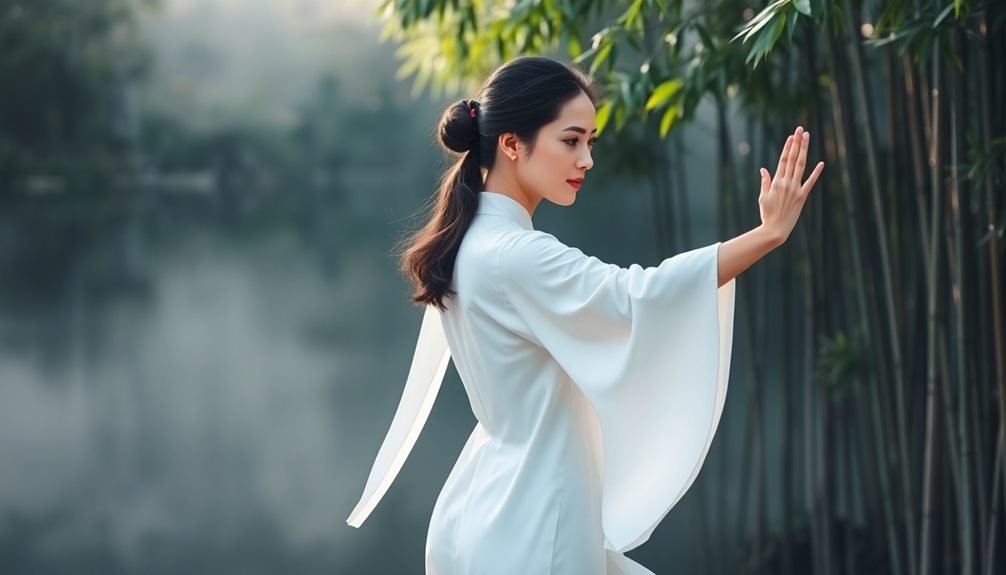
While anxiety can feel like a rushing river, this gentle sequence helps transform that energy into calm, flowing movement. The Flowing Water sequence connects your breath with continuous, wave-like motions that mirror the natural flow of water.
Start by standing in your basic tai chi stance. Raise your arms slowly in front of you, palms facing down, as you inhale. As you exhale, let your arms float down like leaves on water.
Next, shift your weight to your left leg while your arms sweep to the left, as if parting gentle waves. Return to center, then repeat on the right side.
You'll now create circular motions with your arms, letting them cross at chest level before opening outward, like ripples expanding on a pond's surface. Keep your movements slow and intentional, matching each gesture to your breath.
If anxious thoughts arise, imagine them floating away on the water's surface.
Continue this sequence for 3-5 minutes, maintaining soft knees and relaxed shoulders. You'll notice your mind becoming clearer as your body adopts water's natural, effortless flow.
White Crane Spreads Wings
Graceful yet grounding, White Crane Spreads Wings mimics a bird extending its feathers while maintaining perfect balance. This centering movement helps calm your anxious thoughts while strengthening your lower body and improving stability.
You'll find your breath naturally deepening as you shift your weight and extend your arms in this tranquil pose.
To perform White Crane Spreads Wings:
- Begin in a shoulder-width stance, knees slightly bent, with your arms relaxed at your sides. Take a deep breath to center yourself.
- Shift your weight to your right leg as you slowly raise both arms outward, palms facing up, like wings extending from your shoulders. Keep your movements fluid and controlled.
- As your arms reach shoulder height, rotate your palms to face downward while maintaining the wing-like position. You'll feel a gentle stretch across your upper back.
- Hold this position for 3-5 breaths, focusing on the sensation of floating while staying firmly rooted through your supporting leg. Your mind will quiet as you maintain this peaceful balance.
Lower your arms slowly to complete the movement, allowing any tension to melt away with the descent.
Calming Wave Motion

Along with gentle breathing, Calming Wave Motion embodies the fluid essence of water to dissolve anxiety.
You'll start by standing with your feet shoulder-width apart, letting your arms hang loosely at your sides. As you inhale slowly, raise your hands in front of your body, palms facing up, as if lifting a gentle current of water.
When your hands reach chest height, turn your palms downward and begin making smooth, wavelike motions as you exhale. Let your knees soften slightly, allowing your entire body to flow with the movement. Your hands should drift side to side, like seaweed swaying in an ocean current, while maintaining a steady rhythm that matches your breath.
Continue this flowing pattern for 5-10 cycles, focusing on the sensation of gliding through water. You'll notice how the repetitive motion helps quiet racing thoughts and releases tension from your shoulders and neck.
If anxiety starts creeping in, direct your attention to the peaceful wave movements and your steady breathing. This gentle exercise helps activate your parasympathetic nervous system, naturally reducing stress and promoting a sense of calm.
Grounding Root Positions
Anchoring yourself through proper stance creates a solid foundation for managing anxiety. When you establish strong root positions, you're physically communicating stability to your nervous system, helping calm racing thoughts and reducing stress responses.
Your body's connection to the ground becomes a powerful tool for centering your mind.
To develop effective grounding positions, focus on these key elements:
- Stand with your feet shoulder-width apart, toes pointing slightly outward, and knees softly bent – this creates your basic rooting stance.
- Distribute your weight evenly between both feet, imagining roots growing from your soles deep into the earth.
- Relax your hips and lower back, allowing your tailbone to drop naturally while maintaining an upright spine.
- Keep your shoulders relaxed and dropped, creating space between your ears and shoulders.
As you practice these root positions, you'll notice your breathing naturally deepens and your mind becomes more focused.
Moving from this grounded state helps you maintain emotional balance while performing other Tai Chi movements.
Remember to check your alignment periodically, ensuring you haven't shifted into old patterns of tension.
Five-Minute Anxiety Relief Sequence

A simple five-minute sequence of Tai Chi movements can provide quick relief during anxious moments. You'll find this sequence particularly effective when you're feeling overwhelmed or need to center yourself quickly.
| Movement | Breath Pattern | Duration |
|---|---|---|
| Standing Meditation | Deep belly breaths | 45 seconds |
| Cloud Hands | Inhale left, exhale right | 60 seconds |
| Flowing Water | Continuous breathing | 45 seconds |
| Golden Thread | Long exhales | 30 seconds |
Begin in a standing position with your feet shoulder-width apart. Flow through each movement slowly, focusing on your breath and letting go of racing thoughts. During Standing Meditation, imagine roots growing from your feet into the earth. Move into Cloud Hands by raising your arms gently, as if parting clouds. Shift to Flowing Water by letting your arms wave smoothly like a stream. End with Golden Thread breathing, where you'll exhale slowly through slightly pursed lips.
You can repeat this sequence throughout the day whenever anxiety surfaces. Remember to maintain soft knees and relaxed shoulders throughout the practice.
Daily Practice Tips
Establishing a daily Tai Chi practice builds lasting anxiety-management skills. You'll find that consistency matters more than duration, so even 10 minutes each day will help you develop a calming routine.
Choose a quiet space where you won't be interrupted, and remember that mornings often work best before daily stressors begin to accumulate.
Your daily practice will become more effective when you follow these essential guidelines:
- Set a specific time for practice and stick to it – your body will naturally begin to anticipate and prepare for this peaceful moment in your day.
- Wear loose, comfortable clothing and practice either barefoot or in flat shoes to maintain proper balance and ground yourself.
- Focus on your breath throughout each movement, synchronizing your inhales and exhales with your Tai Chi forms.
- Start with simple moves you've mastered before attempting more complex sequences.
Don't worry about perfection – instead, concentrate on how your body feels during each movement.
If you miss a day, simply resume your practice the next day without guilt. Your anxiety management skills will improve naturally as you maintain this mindful routine.
Building Your Tai Chi Routine

Once you've set your daily practice habits, creating a structured Tai Chi routine will maximize your anxiety-relief benefits. Start by dedicating 15-20 minutes for your practice session and gradually increase it to 30-45 minutes as you become more comfortable with the movements.
Begin each session with 3-5 minutes of mindful breathing and gentle stretching to center yourself. Move on to basic stances like "Wu Chi" and "Horse Stance" for 5 minutes to build your foundation.
Next, practice individual movements such as "Wave Hands Like Clouds" and "Grasp Bird's Tail" for 10 minutes, focusing on smooth shifts and proper body alignment. As you progress, incorporate flowing sequences that combine multiple movements.
Don't rush to learn new forms; instead, perfect the basics and add complexity gradually. End your routine with 5 minutes of cooling down exercises and meditation to lock in the calming effects.
Track your progress using a practice journal, noting which movements help most with your anxiety. You'll want to adjust your routine based on your energy levels and stress patterns throughout the week.
Frequently Asked Questions
Can Pregnant Women Safely Practice Tai Chi for Anxiety Relief?
Yes, you can safely practice tai chi during pregnancy to manage anxiety. It's a gentle, low-impact exercise that helps you stay balanced and relaxed. Just be sure to inform your instructor about your pregnancy.
What Should I Wear When Practicing Tai Chi Indoors Versus Outdoors?
You'll want loose, breathable clothes and flat shoes indoors. For outdoor practice, add layers you can remove, wear sunscreen, and choose moisture-wicking fabrics. Make certain your clothing allows full range of motion.
How Long Does It Take to Master Basic Tai Chi Movements?
You'll need about 3-6 months to learn basic movements with regular practice. Don't rush – mastering fundamentals takes patience. Practice 2-3 times weekly for 20-30 minutes to develop proper form and flow.
Are There Age Restrictions for Starting Tai Chi as Anxiety Therapy?
You can start practicing tai chi at any age. Whether you're 8 or 80, the gentle movements and breathing exercises are adaptable to your fitness level and physical capabilities. It's never too early or late.
Will Practicing Tai Chi Interfere With My Current Anxiety Medications?
You should always consult your doctor before combining Tai Chi with anxiety medications. While it's generally safe, your healthcare provider can guarantee there aren't any specific concerns related to your medication regimen.
In Summary
You've now got the essential tools to begin your Tai Chi journey for anxiety relief. Start with just five minutes daily, focusing on your breathing and gentle movements. Don't worry about perfection – what matters is staying consistent and mindful. As you build confidence with these basic moves, you'll discover how Tai Chi's ancient wisdom can bring modern calm to your busy life.
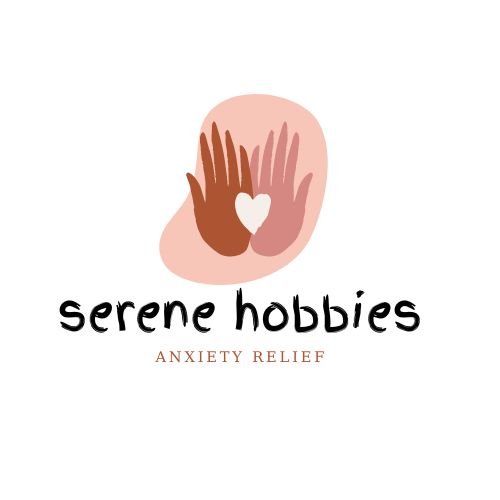

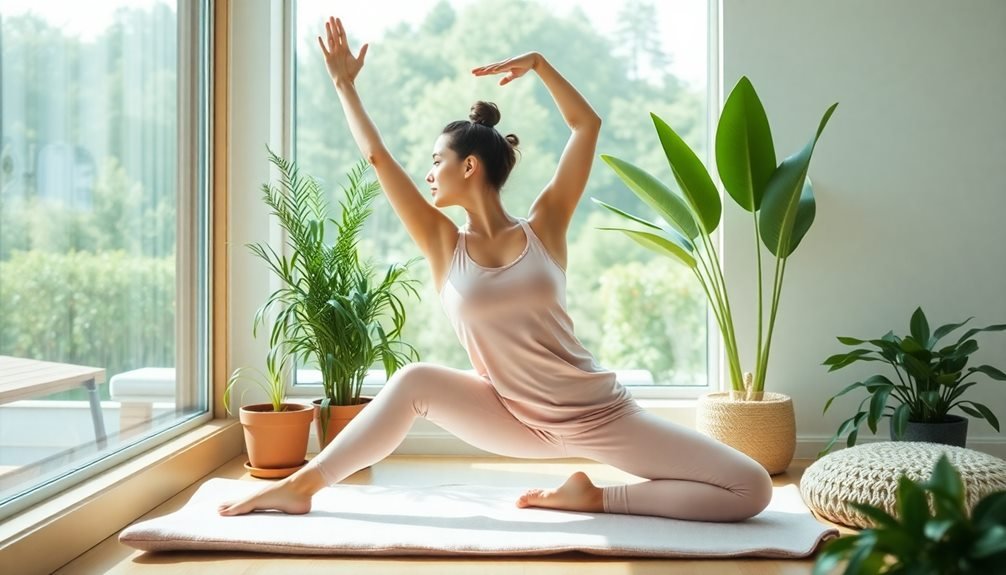
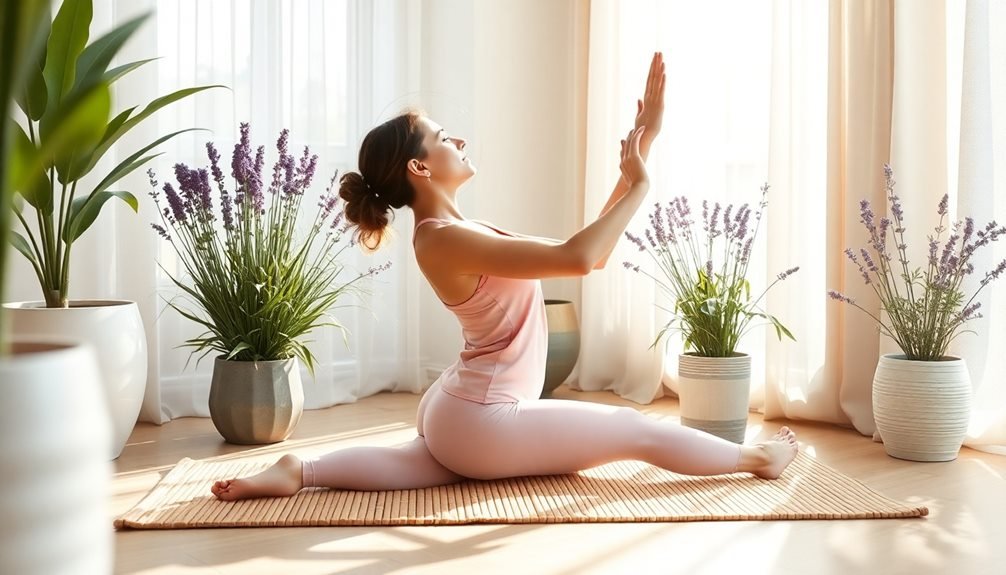
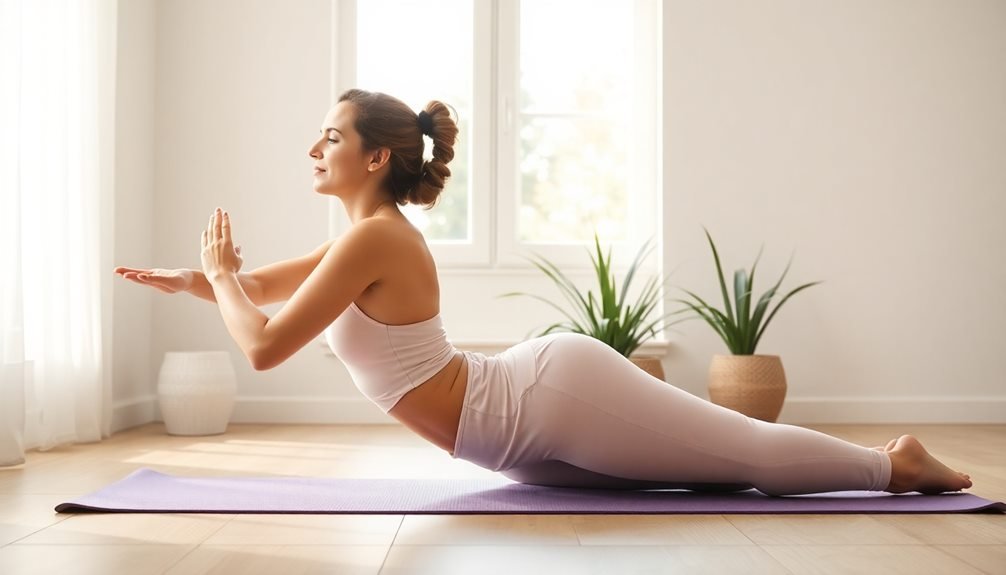
Leave a Reply